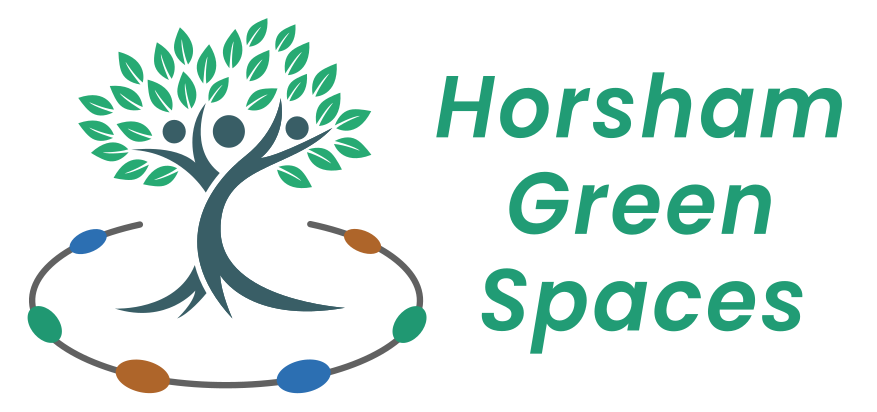Prior to development this area was adjacent to a large field which was home to a carthorse. Local children would play in the field & feed apples to the horse. The horse's name was “Shandy” & thereafter the field became known as ”Shandy's Field”.
On completion of Arunside and Tanbridge Park, all that remains of the field is a narrow strip of land alongside the twitten connecting Blackbridge Lane with Tanbridge Park. A small brook flows down the centre of this strip and then disappears under Blackbridge Lane and Arunside through a culvert to discharge into the Arun.
The site inevitably became a dumping ground for litter, poo-bags and other rubbish.
It all began with an idea.
Two of us, who live locally, saw the potential of the plot for rewilding to the benefit of plants, animals (in particular pollinators) and the public. We gained consent from Horsham District Council at the beginning of 2020 to take over management of the land and to ensure that the culvert grille and the foot/cycle path were kept clean and unobstructed.
Our first task was to replace 50% of the chain-link fence running between the path and the steep bank down to the brook as this had become badly damaged and in places absent representing a danger to the public especially children from the two nearby primary schools.
We then removed a large amount of rubbish and rank growth, which was a huge undertaking of several weeks, weeded and cleaned the foot/cycle path and removed the brambles overhanging the path which represented a danger to cyclists and pedestrians.
Ryegrass and Sedge
Because of the steepness of the ground, we could not dig at all. However the land was completely choked with Hybrid Ryegrass (Lolium x hybridum hausskn), and Pendular Sedge (Carex pendulosa). The Carex was reduced in extent, except along the margins of the brook channel where its extensive root system will stabilise the banks of the stream.
Yellow Rattle (Rhinanthus minor) has been extensively autumn sown for four consecutive years, which has finally achieved a measure of control over the Ryegrass, along with an annual end of summer mow, removing all arisings.
Winning Support
It became clear early on in the first year that in order to win the support of the public and local residents, who were initially sceptical of our plans, we had to show some quick and attractive results. To this end we seeded the land with a meadow mix of certified seed from an accredited commercial supplier.
Finding a path
A number of hollyhock (Malveae Alcea) grow along the fence to the north of the footpath, which we retained and nurtured along with a handful of other familiar garden plants (which we knew would eventually be out-competed by wild species) in order to provide something familiar and recognisable as flowers as opposed to “weeds”.
Although this would meet with the disapproval of the purist, in an urban setting a degree of compromise is needed in order to win over local people, and this has paid off. We have also collected samples of seed from local wild species, especially perennials, to increase variety on the site, which had a low species count when we took it over.
Flourishing Success!
All the work on this independent project has been done by us and entirely financed by us. The land has flourished and now contains a large variety of plants, insects and other life and has proved very popular with local people, which has been our main aim along with demonstrating what can be done on a small piece of land such as a garden. A number of people have said that they were providing wild areas in their own gardens.
What’s next?
Our future plans are to continue with our work, in particular gaining public support for rewilding here and elsewhere in the Town. We also intend to harvest seed from the site and offer it free to the local public should they wish to start a similar project in their own gardens.









